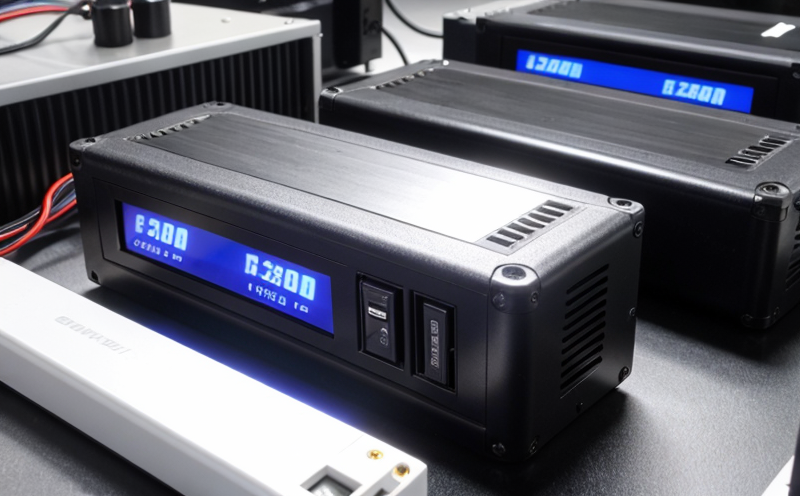ASTM F3146 Secondary Cell Cycle Life and Performance Testing
The ASTM F3146 standard is widely recognized in the battery industry as a pivotal tool for assessing the cycle life and performance characteristics of secondary cells. This service focuses on providing comprehensive testing solutions that align with this standard, ensuring that manufacturers can meet stringent quality control and regulatory requirements.
Secondary cells are rechargeable batteries that offer multiple charge/discharge cycles before reaching their end-of-life. The ASTM F3146 standard specifies a method for determining the cycle life of secondary cells under controlled conditions. This involves charging, discharging, and resting the cell in a cyclic manner to simulate real-world usage scenarios.
The testing process is critical for evaluating the performance parameters such as voltage, capacity, internal resistance, and Coulombic efficiency over time. By adhering to ASTM F3146, manufacturers can ensure that their products meet industry standards and are reliable across various applications like automotive, medical devices, and consumer electronics.
The testing protocol outlined in ASTM F3146 is designed to be rigorous yet practical. It covers a wide range of secondary cells including lithium-ion, lead-acid, nickel-cadmium, and others. The standard specifies the initial charge and discharge rates, cycle count limits, temperature conditions, and other environmental factors that can impact cell performance.
One of the key aspects of this testing is the ability to predict the lifespan of secondary cells accurately. By subjecting batteries to controlled cycles under specified conditions, we can identify how they perform over extended periods. This predictive capability is crucial for manufacturers who need to ensure their products meet longevity expectations in various end-use applications.
The ASTM F3146 standard also emphasizes the importance of reproducibility and repeatability in testing results. This ensures that the data obtained from these tests can be trusted across different laboratories, which is vital for industry standards and compliance purposes. The strict adherence to this protocol helps maintain consistency in quality assurance processes.
In addition to assessing basic performance metrics, ASTM F3146 also considers other factors like safety and environmental impact. Understanding how a battery performs under varying conditions helps manufacturers identify potential risks early on. Moreover, the test results provide insights into sustainable design practices that can reduce waste and enhance overall sustainability.
Testing secondary cells according to ASTM F3146 is not just about meeting regulatory requirements; it's also an opportunity for innovation within the industry. By pushing boundaries in terms of performance and longevity, manufacturers can gain a competitive edge in today’s fast-paced market environment. The insights gained from these tests can lead to improvements in battery technology, which ultimately benefits consumers worldwide.
For quality managers, compliance officers, R&D engineers, and procurement professionals, this service offers valuable support in ensuring product reliability and regulatory compliance. By leveraging ASTM F3146, organizations can enhance their reputation for producing high-quality products while adhering to international standards.
Applied Standards
- ASTM F3146
The ASTM F3146 standard is specifically designed for testing the cycle life and performance of secondary cells. It provides detailed procedures for charging, discharging, and resting the cell in a cyclic manner to simulate real-world use conditions.
International Acceptance and Recognition
The ASTM F3146 standard has gained widespread acceptance within the battery industry. Its rigorous testing protocols have been adopted by numerous organizations worldwide, ensuring that manufacturers can meet global quality control standards.
Many leading companies in the automotive, medical device, and consumer electronics sectors rely on ASTM F3146 to validate their products before bringing them to market. The international recognition of this standard adds credibility to test results, making it a valuable tool for both domestic and export markets.
Environmental and Sustainability Contributions
- The testing process helps identify areas where improvements can be made in battery design to enhance longevity and reduce waste.
- By understanding how batteries perform under different conditions, manufacturers can implement more sustainable practices that minimize environmental impact.
- This service supports the development of greener technologies by providing data-driven insights into performance metrics, which can guide future innovations aimed at reducing carbon footprints.





